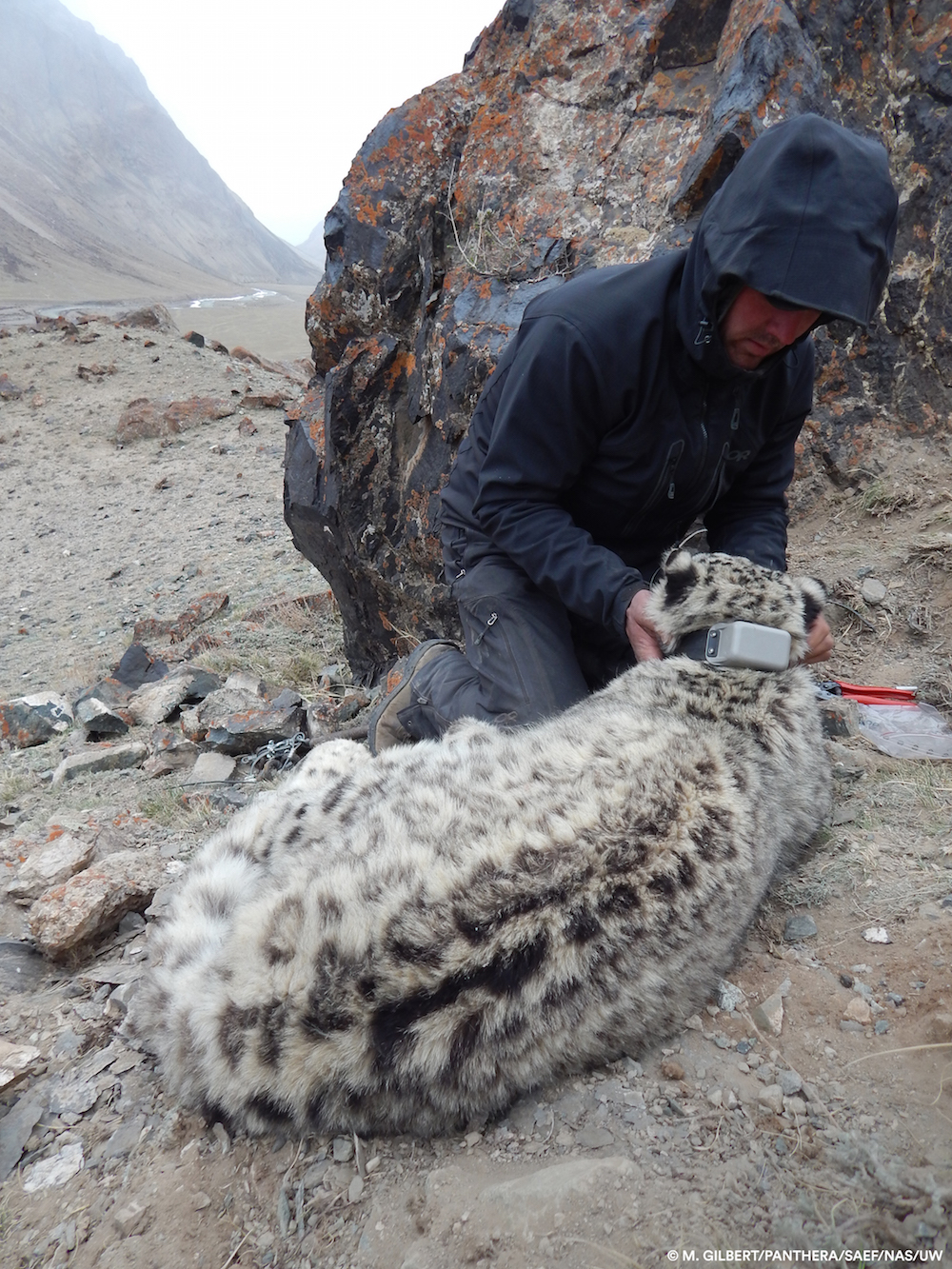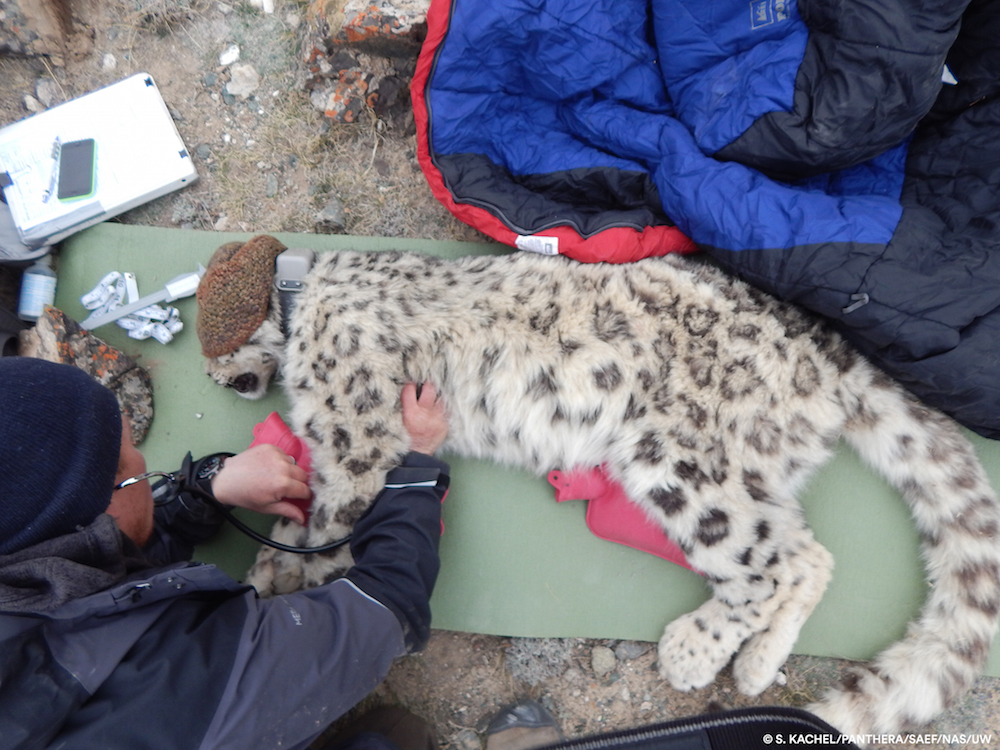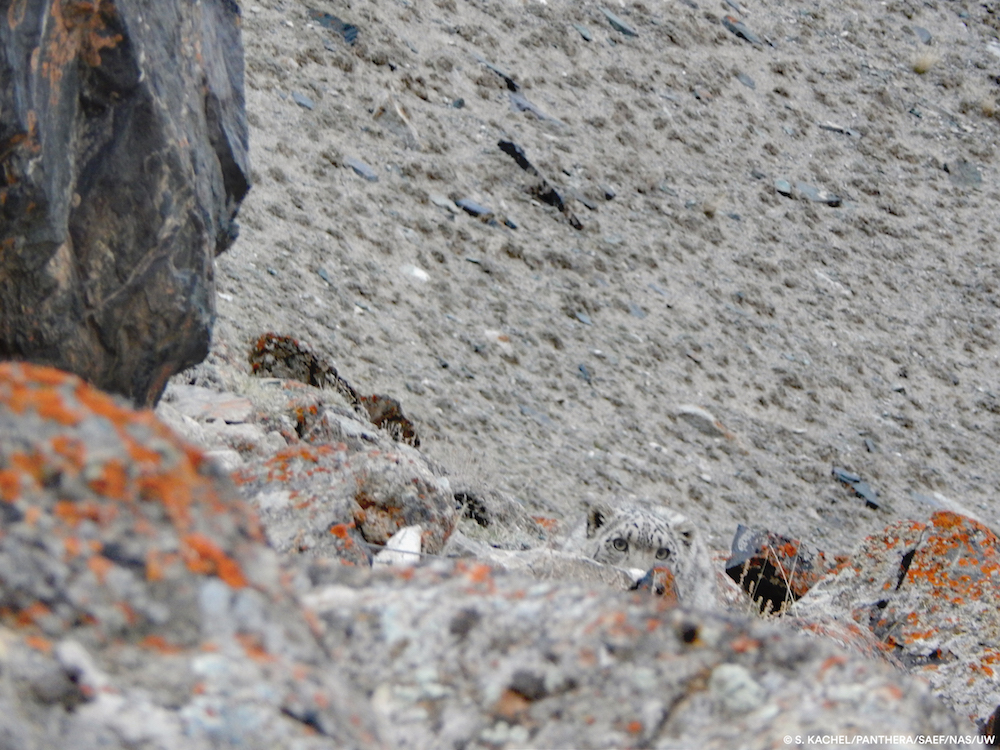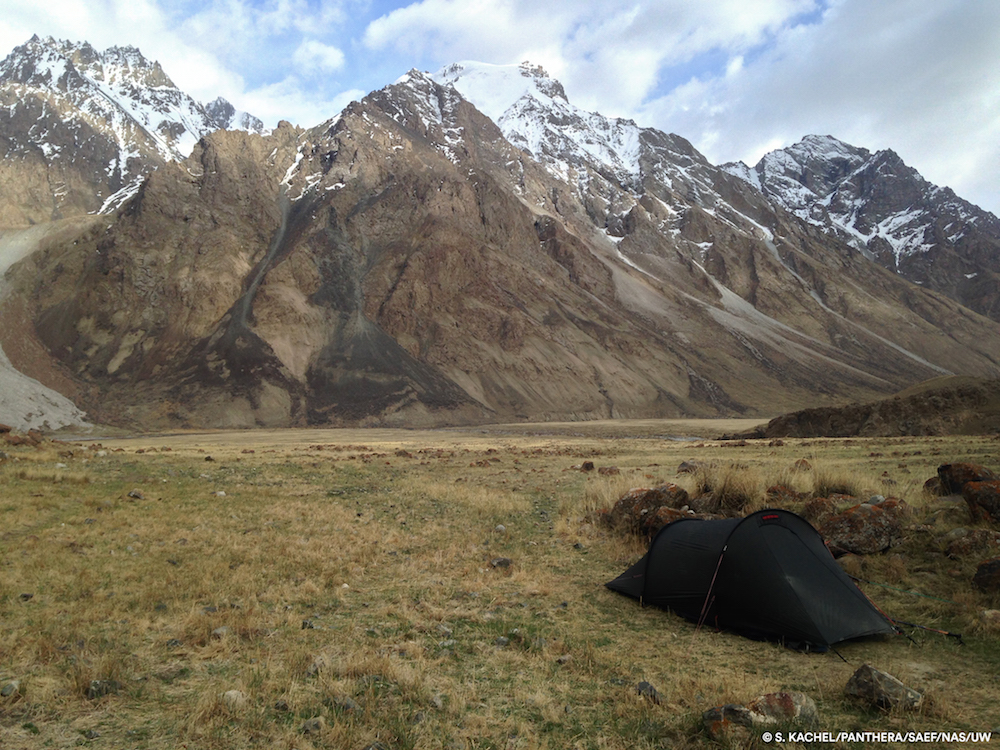Introduction

A snow leopard was collared in Kyrgyzstan in the spring of 2016, the second of these elusive creatures to have been collared by conservationists in six months. The female was specifically found in the Sarychat-Ertash Strict Nature Reserve of Eastern Kyrgyzstan. The finding suggests that at least this population of the endangered cats may be rebounding, scientists said. [Read more about the collared snow leopard]
Mama cat

The cat was a female who had lactated, suggesting she had at least one pup. That, combined with the fact that another snow leopard that was collared in the country was photographed with three pups, suggests the big cats feel comfortable breeding and raising young. That could suggest the population is rebounding. [Read more about the collared snow leopard]
Camouflage

Can you spot the snow leopard? The snow leopard has a mottled coat that allows it to blend in perfectly to its rocky, snow-flecked surroundings. [Read more about the collared snow leopard]
Snowy peaks

The snow leopard lives in 12 different countries in Asia, usually in rocky, mountainous areas. They have been prey to poachers seeking their internal organs and furs, as well as shepherds hoping to protect their flock. As a result, their populations plummeted in the 1990s. [Read more about the collared snow leopard]
Camp view

Here, a view from the Sarychat-Ertash Strict Nature Reserve of Eastern Kyrgyzstan, where the snow leopard was collared. [Read more about the collared snow leopard]
Get the world’s most fascinating discoveries delivered straight to your inbox.

Tia is the managing editor and was previously a senior writer for Live Science. Her work has appeared in Scientific American, Wired.com and other outlets. She holds a master's degree in bioengineering from the University of Washington, a graduate certificate in science writing from UC Santa Cruz and a bachelor's degree in mechanical engineering from the University of Texas at Austin. Tia was part of a team at the Milwaukee Journal Sentinel that published the Empty Cradles series on preterm births, which won multiple awards, including the 2012 Casey Medal for Meritorious Journalism.
